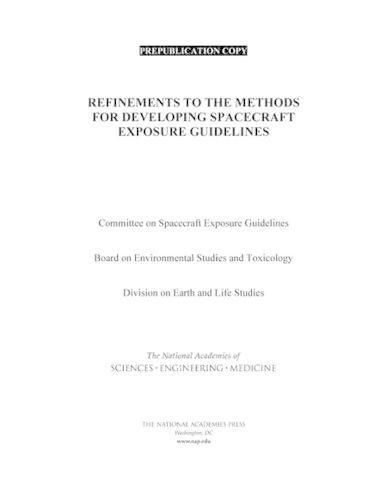Readings Newsletter
Become a Readings Member to make your shopping experience even easier.
Sign in or sign up for free!
You’re not far away from qualifying for FREE standard shipping within Australia
You’ve qualified for FREE standard shipping within Australia
The cart is loading…






Human spaceflight is inherently risky, with numerous potential hazards posed at each phase of a mission. Potential health risks during spaceflights include short-term health consequences from being in microgravity, as well as long-term health consequences that arise, or continue, months or years after a flight. Additional health considerations are risks posed by exposure to environmental contaminants onboard spacecraft. Because the International Space Station and spacecraft are closed environments that require recirculation of air and water supplies, some contamination of the air and water will occur. Even with onboard air and water purification systems, chemicals will accumulate in the air and water as they recirculate or are recycled onboard. Therefore, it is necessary for the National Aeronautics and Space Administration (NASA) to identify hazardous contaminants and determine exposure levels that are not expected to pose a health risk to astronauts.
NASA uses spacecraft maximum allowance concentrations (SMACs) and spacecraft water exposure guidelines (SWEGs) to provide guidance on acceptable exposures to air and water contaminants during normal operations and emergency situations. Refinements to the Methods for Developing Spacecraft Exposure Guidelines updates the methods for establishing SMACs and SWEGs and assists NASA with identifying chemicals that need updated SMACs or SWEGs and new chemicals for which these guidelines should be developed.
$9.00 standard shipping within Australia
FREE standard shipping within Australia for orders over $100.00
Express & International shipping calculated at checkout
Human spaceflight is inherently risky, with numerous potential hazards posed at each phase of a mission. Potential health risks during spaceflights include short-term health consequences from being in microgravity, as well as long-term health consequences that arise, or continue, months or years after a flight. Additional health considerations are risks posed by exposure to environmental contaminants onboard spacecraft. Because the International Space Station and spacecraft are closed environments that require recirculation of air and water supplies, some contamination of the air and water will occur. Even with onboard air and water purification systems, chemicals will accumulate in the air and water as they recirculate or are recycled onboard. Therefore, it is necessary for the National Aeronautics and Space Administration (NASA) to identify hazardous contaminants and determine exposure levels that are not expected to pose a health risk to astronauts.
NASA uses spacecraft maximum allowance concentrations (SMACs) and spacecraft water exposure guidelines (SWEGs) to provide guidance on acceptable exposures to air and water contaminants during normal operations and emergency situations. Refinements to the Methods for Developing Spacecraft Exposure Guidelines updates the methods for establishing SMACs and SWEGs and assists NASA with identifying chemicals that need updated SMACs or SWEGs and new chemicals for which these guidelines should be developed.